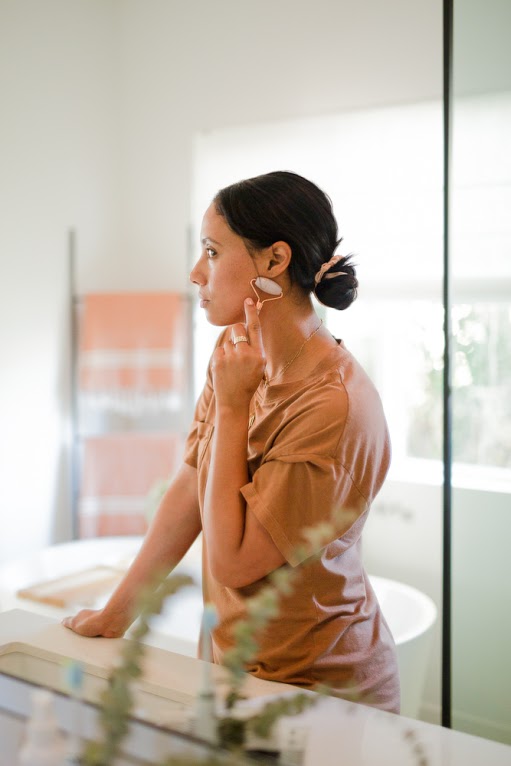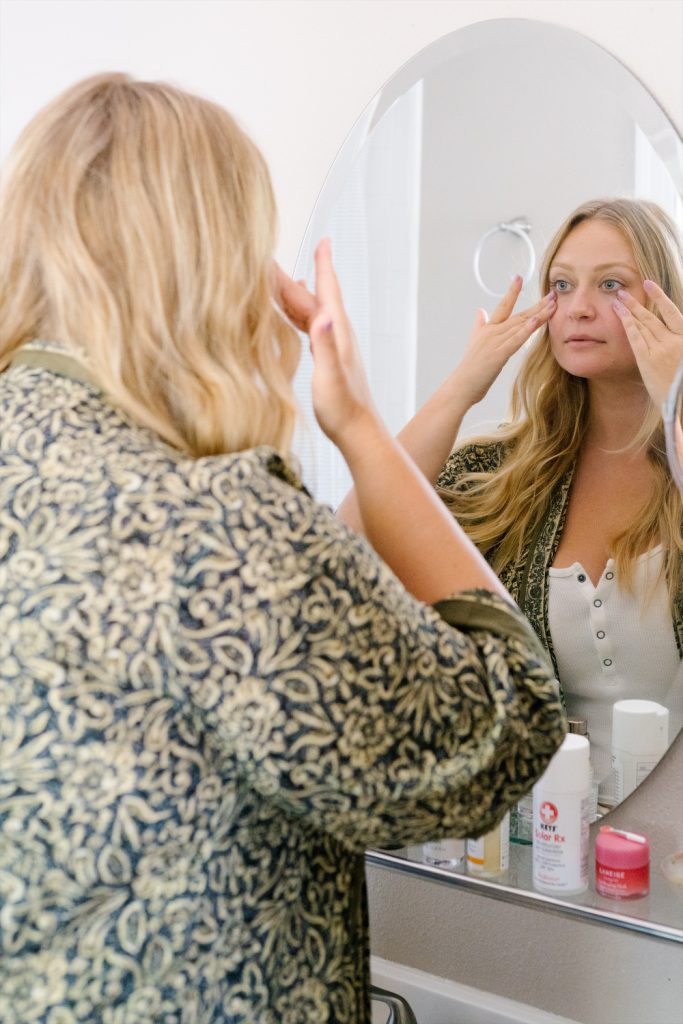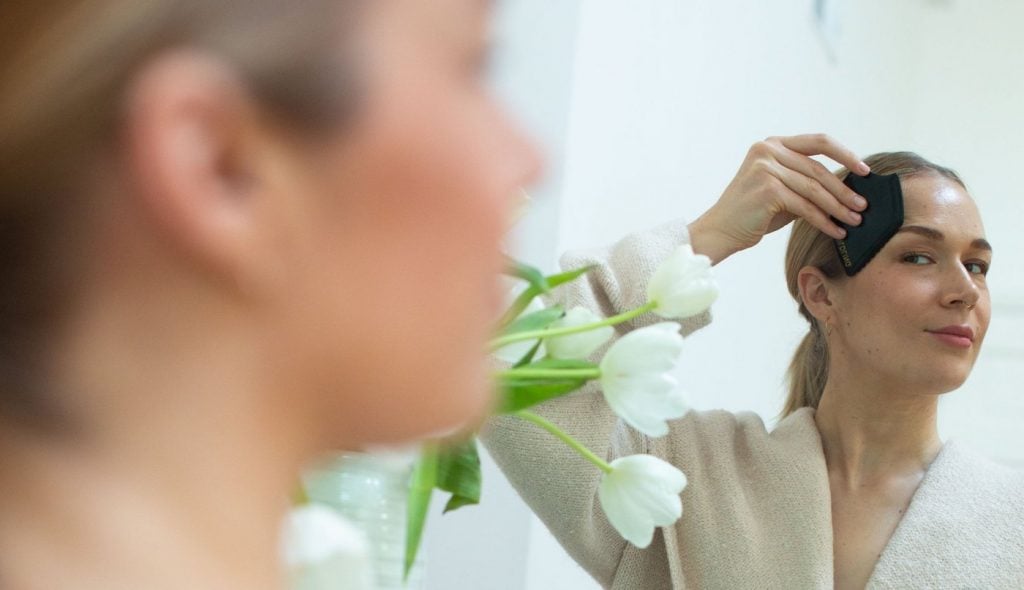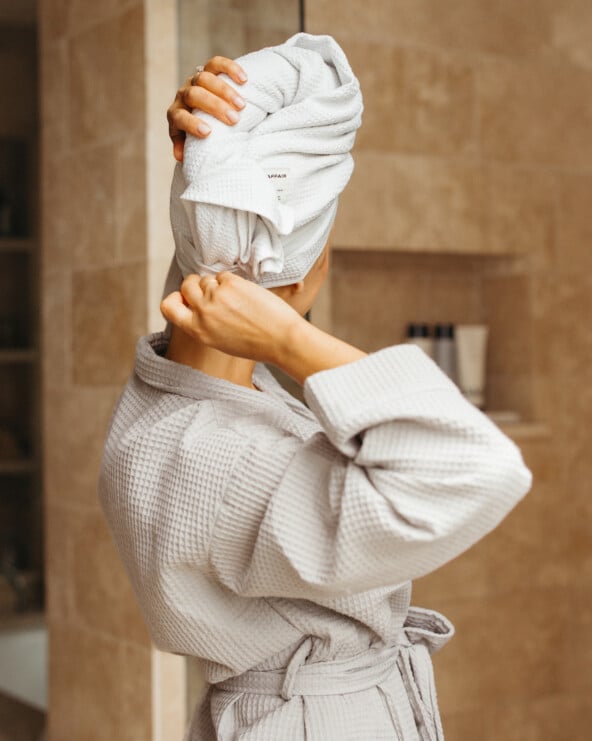Thanks to the rise of jade rollers, Gua Sha, and brands like FaceGym, our awareness of facial massage—an ancient beauty technique—is at an all-time modern high. Sharp-cheekboned-celebs like Karlie Kloss and Meghan Markle regularly tout the sculpting, contouring benefits of the hands-on technique, which can improve lymphatic drainage and encourage blood flow for a glowy appearance. But no matter how many mesmerizing videos you watch on Instagram, understanding the ins and outs of performing an at-home facial massage can be a little overwhelming.
Enter Joomee Song, a Korean-Japanese aesthetician, and creator of the KAIKA facial massage technique, which she regularly performs in her Faceworks Studio in Los Angeles—occasionally on celebrities like Lady Gaga. The talented facialist uses her intuitive approach to release tension and stimulate collagen production (she’ll even teach you how to do so virtually.)
Song walks us through the benefits of facial massage, how often we should be doing one at home, and why your hands may be the best tool in your beauty arsenal.

What are the benefits of at-home facial massage?
One of the most significant benefits of at-home facial massage is self-connection time. Healthy skin always starts within, and facial massage is a crucial way of achieving that. The technique I encourage is not about how much pressure you apply to your face or even for how long. Instead, it’s about recognizing how you hold your tension in your face and how that tension changes by touching it and feeling it every day. I like to check in with myself when I massage my face. I ask myself, “What made today great? What made today challenging? How can I make this situation better next time?” and so on. It’s essential to understand your stress levels and the facial tension that comes with it and let go of it at the end of each day.
Another benefit is that having stiff muscles in your face causes unhealthy blood flow and poor lymph circulation. When our tissues do not receive enough nutrients and oxygen, inadequate detoxification arises, which can cause breakouts, redness, dullness, puffiness, and drooping of the cheeks due to the weight of water retention. Massaging relieves the tension in our tissue and creates healthier blood flow and better lymphatic circulation to help eradicate all of this.


How are your massages at your Faceworks studio different?
My massages at my Brentwood-based studio harness a unique protocol called KAIKA™, which means “to bloom” in Japanese. It combines an ancient form of deep facial massage to lift, tone, and detoxify the skin; a chiropractic Shiatsu technique that realigns facial structure; and a unique form of microcurrent that improves the lymphatic drainage system so that skin can function optimally.


You focus on relieving stress/tension/drainage—how can facial massage help with that?
When we are stressed, our body stays in defense mode, and this tightening up of the muscles and clenching the teeth leads to sore muscles in the face and body. After two decades of working on face after face, I firmly believe that they sustain the brunt of stress-related muscle issues because the face and head are where stress and anxiety are stored first. Many of my clients will treat their headaches and migraines with a facial massage or sculpt massage.
When we talk about anti-aging, we have to remember that the most crucial element is healthy blood flow in the skin. Your lymphatic drainage system lies in between the tissue and muscle, and it has no pumping mechanism of its own; instead, it relies on healthy muscle and joint movements to pump. Having tense, stiff muscles due to stress in our faces, especially in the masseter, temporalis, and neck where the lymphatic system is located, in addition to jaw clenching and anxiety, can cause more water retention. And toxins and waste in the lymph will not flow smoothly, so you must stimulate your lymphatic system to detoxify.


How often should we do facial massage at home? Why?
If you want healthy, resilient skin then I recommend facial massage every day, even if it’s only for a few minutes. When you begin to massage your face daily, the immediate benefits of releasing the tension in your facial muscles and assisting in the lymphatic draining process are profound. However, the real change comes over time when your overall skin texture begins to improve. Elastin, like collagen, is a protein that helps the connective tissue retain its shape. Over time, we lose the amount of elastin and collagen in all of our connective tissue, but by increasing blood flow to the areas of our body experiencing this loss, we can rebuild it.


Should we use a tool or just our hands? What’s the benefit?
I always get questions as to which tools people should use at home. You can use any tool of your choice but always finish your massage by using your hands. Our fingers have sensory memory that tells you if your face carries more stress or feels dry, etc., on any given day. Tools don’t have this capability. Get to know your face, its texture, and the areas where you hold tension, and you’ll be amazed at the results.
How can we learn more about facial massage to take better care of ourselves?
We have introduced a DIY facial massage series on our social media platforms that anyone can follow so visit @joomee_song. I have also started to teach an easy three-step facial massage technique on the video chat platform Bright Live.





